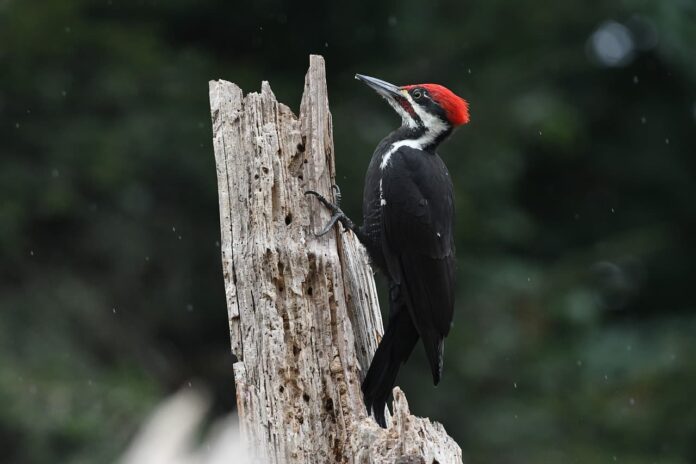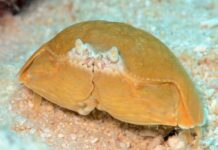Woodpeckers are like those annoying neighbors we have who can’t stop drilling and making noise. These birds have very strong and sturdy beaks with a chisel-like tip for drilling holes in wood. A woodpecker is an arboreal bird that taps on tree trunks to forage for insect prey. That is also how they got their name as well, the pecker of the wood. There are some fascinating facts about these birds, so let’s find out with me below.
1Appearance
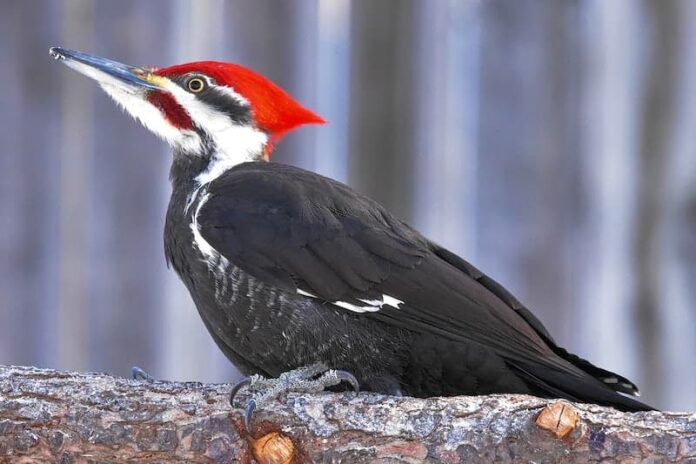
Woodpeckers come in a variety of colors such as red, white, black, and yellow. Their plumage can also be a combination of orange, green, brown, and golden. If you look closely, you can tell that woodpeckers have fuzzy noses. Their nostrils are covered in feathers to keep splinters and dust out while they peck, how cool right? The woodpecker’s bill helps to distribute shock throughout its thick skull when pecking to avoid brain damage. At the same time, their thick spongy skull absorbs the impact of repeated drilling.
The cool thing about them is that they have zygodactyl feet. Each foot of a woodpecker has 4 fingers, two facing forward and two facing backward. This arrangement ensures that they have a strong grip on the branches and provide stability. At the same time, they also have a pair of centrally located feathers that deliver extra stability as well. The feathers also keep them upright position while standing in the trees. With everything combined together, woodpeckers can easily peck wood for food without falling off.
2Behavior
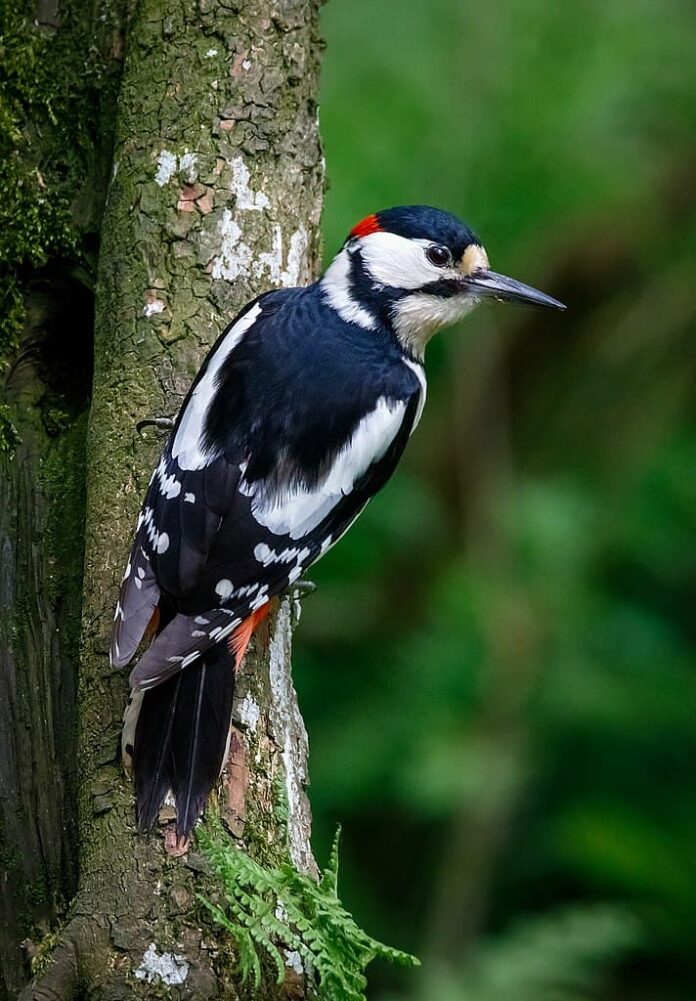
Most woodpecker species are not social, and they either remain solitary or in pairs. The weird thing is their aggressive behavior towards each other between the anti-social species with the species that live in groups. Solitary species will defend feeding resources like a termite colony or fruit-laden tree at all costs. Their aggressive behavior includes bill-pointing and jabbing, head shaking, wing flicking, chasing, drumming, and vocalizations. The group-living species tend to be communal, and they may join mixed-species foraging flocks with other insectivorous birds. Doing so benefits them because that helps to decrease their anti-predator vigilance and increase their feeding rate.
Woodpeckers are diurnal, and they roost at night inside holes and crevices. To many of their species, the place they roost will become their nest site during the breeding season. These birds are monogamous, and both the male and female prepare the nest in the tree. The female lays between 2 to 5 eggs, and the incubation period lasts about two weeks. The hatchings are blind and featherless, so the parents stay in the nest and hunt food to support the babies. The young woodpeckers are ready to leave the nest after 25 to 30 days.
Woodpeckers are both useful and disturbing to us humans. These birds are useful because they help in removing insect pests from trees. Their drawback is the noise, of course, and that they feed on fruit crops or make holes in wooden structures. The woodpeckers are usually silent except during spring when they make loud calls and drum loudly. Those noises are the signs of males locking in their territories. The drumming also serves a part in courtship rituals as well.
3Feeding & Habitat
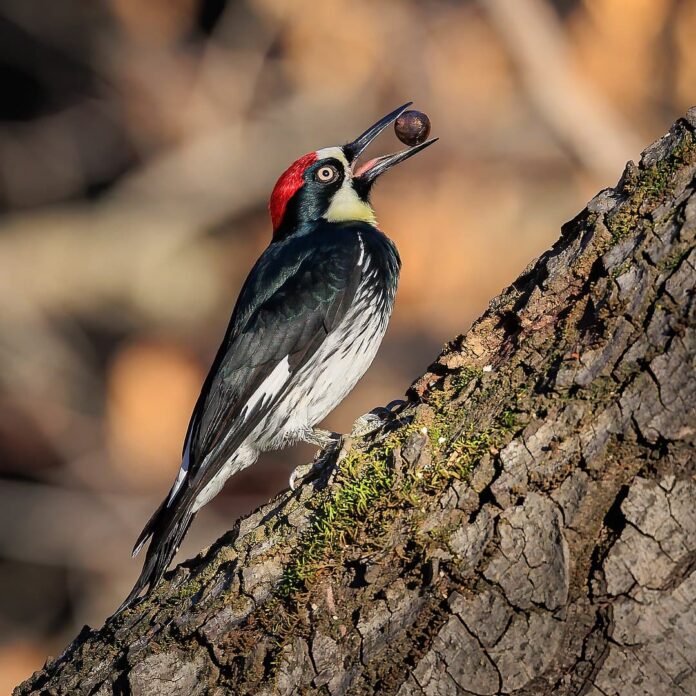
Woodpeckers have a very long tongue which is designed for capturing prey that hides inside the trees. There are some woodpecker species that have a barbed tongue which helps them to get food even easier. Their tongues are usually twice the length of their bill so that they can easily reach insects in the holes they peck out. When not in use, the long tongue curls around the back of the head between the skill and the skin. Most woodpeckers spend their entire lives in trees, spiraling up the trunks in search of insects. Their diet consists of ants, termites, beetles, beetle larvae, caterpillars, spiders, other arthropods, bird eggs, nestlings, small rodents, lizards, fruit, nuts, and sap.
These chiseling birds are everywhere, but they reach the greatest diversity in tropical rainforests. Their population also occurs in almost all suitable habitats including woodlands, savannahs, scrublands, and bamboo forests. The tree-living woodpeckers nest in tree cavities, with access holes they carve themselves. These birds are perfectionists, and they will peck an entrance that is a perfect circle. As for ground-dwelling woodpeckers, they spend a portion of their time feeding on the ground. Some of them even abandoned trees entirely, and nested in holes in the ground instead. There are over 200 species of them that you can find around the world except in Australia, New Zealand, Madagascar, and Antarctica.
4Predators & Threats
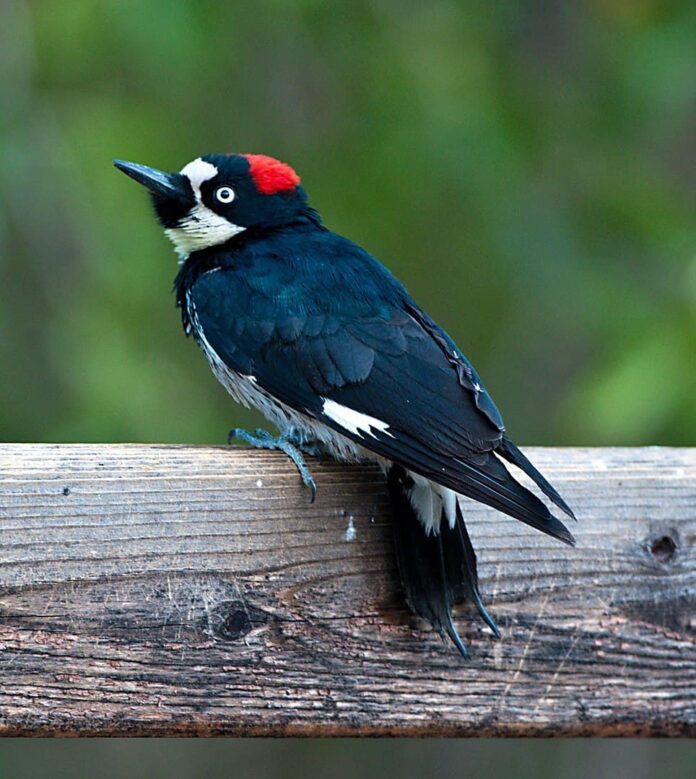
Common predators of woodpeckers are wild cats, snakes, foxes, larger birds, rats, and more. Some of them prey on the woodpeckers while others prey on their eggs which are vulnerable to predation. Apart from that, their main threat is habitat destruction. As woodland birds, deforestation and clearance of land for agriculture and other purposes can reduce their population dramatically. Because of that, some species adapt to living in plantations and secondary growth or to open countryside with forest remnants and scattered trees.
Related Post: Things You Should Know About Blue-Footed Booby

